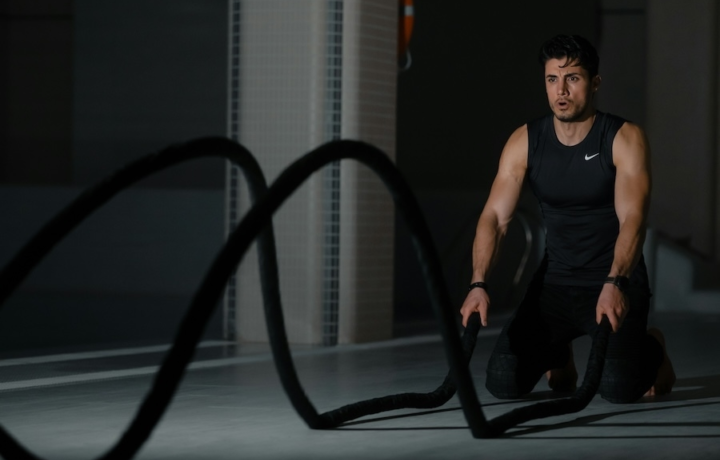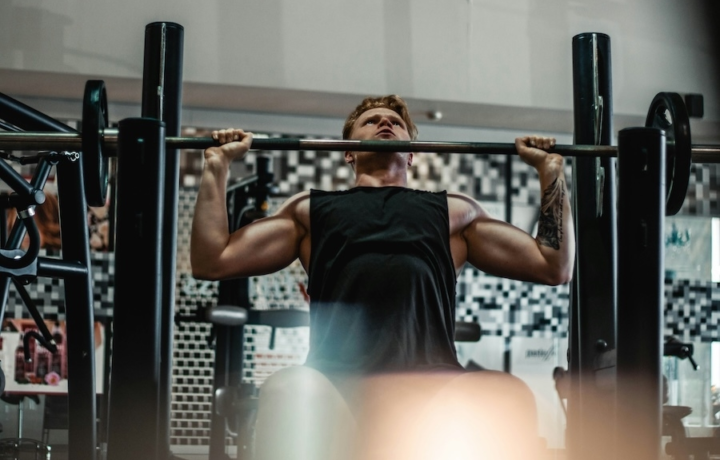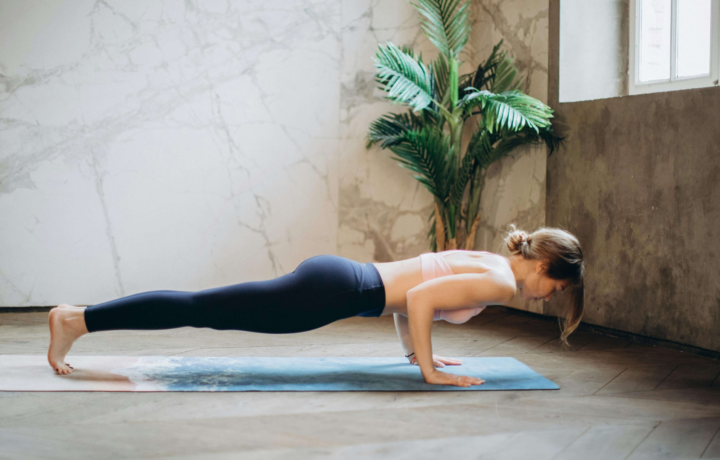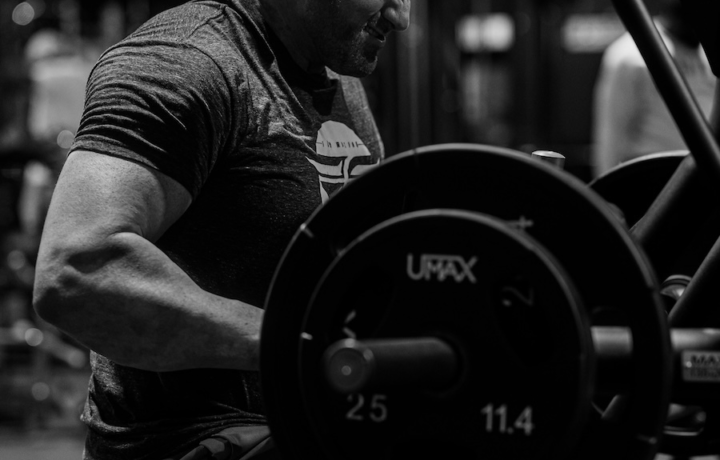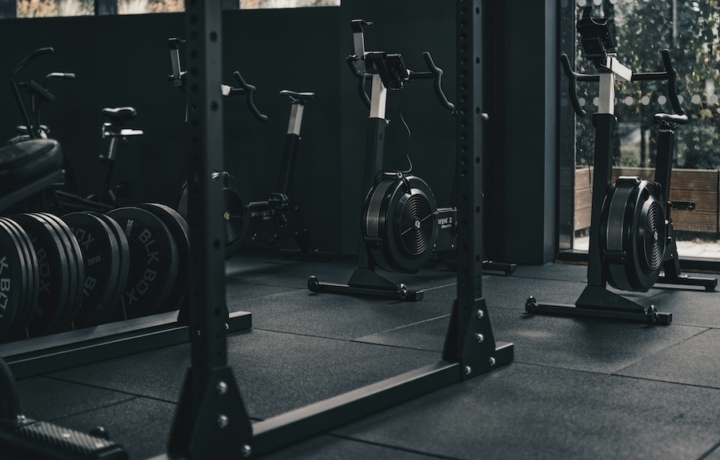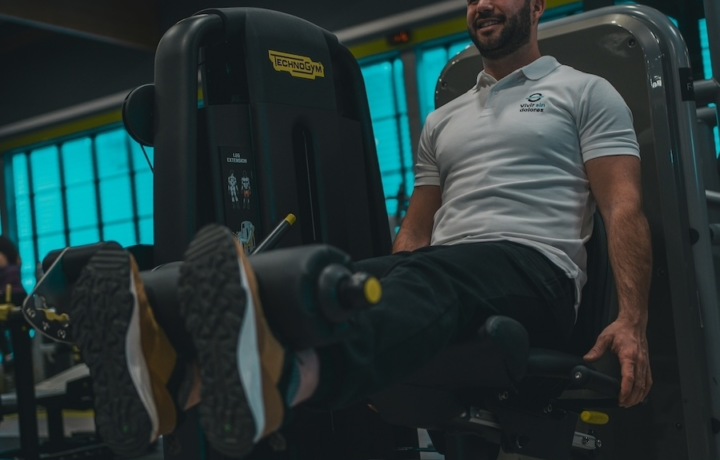Exercise
Forward Lunge

Forward Lunge
How to Perform
- Stand upright with feet hip-width apart, maintaining a neutral spine with shoulders back and down, and core engaged.
- Take a controlled step forward with your right foot, landing heel first, creating a distance of approximately 2-3 feet between your front and back foot.
- Lower your body by bending both knees to approximately 90 degrees, ensuring your front knee tracks over your ankle but not beyond your toes, while exhaling during the descent.
- Keep your torso upright, chest lifted, and gaze forward as your back knee lowers toward the floor without touching it, maintaining about 1-2 inches of clearance.
- Press firmly through the heel of your front foot to drive yourself back up to the starting position while inhaling, engaging your front leg's quadriceps and glutes.
- Maintain balance by keeping your core tight and hips square throughout the movement, avoiding any lateral tilting or rotation.
- Complete all repetitions on one leg before switching to the other side, or alternate legs for each repetition depending on your program.
- For added stability, you may hold dumbbells at your sides with arms straight and shoulders relaxed, or place hands on hips if performing without weights.
Important information
- Keep your front knee aligned with your second toe throughout the movement to protect your knee joint.
- Maintain a tall posture with your chest up and shoulders back—avoid leaning forward which places strain on your lower back.
- If you experience knee pain, try taking a slightly wider stance or reducing the depth of your lunge.
- Control the movement both on the way down and up—rushing increases risk of injury and reduces effectiveness.

Forward Lunge
Exercise Details
Primary Muscles
Muscle Groups
Mechanic
Risk Areas
Built for progress
Take the guesswork out of training
Create personalized AI-powered workout plans that evolve with you. Train smarter, track every rep and keep moving forward, one workout at a time.






The Forward Lunge stands as a cornerstone movement in any well-rounded fitness regimen, challenging multiple muscle groups while improving functional strength. This intermediate-level exercise primarily targets the glutes, quads, and hamstrings, creating a comprehensive lower body workout that translates to everyday movements and athletic performance.
Whether you're incorporating Forward Lunges into a high-intensity interval training (HIIT) session, using them as part of your bodybuilding routine, or simply warming up before a more intense workout, this versatile exercise delivers results. The dynamic nature of lunges makes them particularly effective at elevating heart rate while simultaneously building muscle, making them a time-efficient addition to any training program.
What sets the Forward Lunge apart is its ability to simultaneously develop both strength and endurance. As you progress through repetitions, you'll notice the dual challenge of maintaining proper form while pushing through the muscular fatigue that builds in your quadriceps, hamstrings, and glutes. This exercise effectively bridges the gap between pure strength training and cardiovascular conditioning.
The unilateral (single-leg) aspect of Forward Lunges helps identify and correct muscle imbalances between your left and right sides, preventing potential injuries and enhancing overall athletic performance. Regular practice improves stability, coordination, and proprioception—your body's ability to sense its position in space—which pays dividends in both sports and daily activities.
For those looking to maximize their training efficiency, Forward Lunges offer exceptional metabolic demand due to the large muscle groups involved. This translates to greater calorie burn during and after your workout, supporting body composition goals alongside strength development. The exercise also improves hip mobility and ankle flexibility, contributing to better movement patterns in everything from running to climbing stairs.
Ultimately, the Forward Lunge earns its place in fitness programs across experience levels by delivering comprehensive lower body development while improving functional movement patterns that transfer directly to real-world activities.
FAQ - Forward Lunge
Forward Lunges primarily work your quadriceps, hamstrings, and gluteal muscles, while also engaging your calves and core as stabilizers. The unilateral nature of the movement makes it particularly effective for developing balanced lower body strength.
Stand with feet hip-width apart, step forward with one leg, and lower your body until both knees form 90-degree angles, keeping your front knee aligned with your ankle. Push through your front heel to return to the starting position, maintaining an upright torso throughout the movement.
Beginners can perform stationary lunges or use a wall for balance, while advanced exercisers can add weights (dumbbells, kettlebells, or a barbell), increase range of motion, or incorporate a deficit. For an extra challenge, try walking lunges or pulse at the bottom of the movement.
Avoid letting your front knee extend past your toes, dropping your chest forward, or stepping too narrow (creating instability). Also, prevent your back knee from slamming into the ground and ensure you're not favoring one side over the other, which can reinforce existing imbalances.
Include Forward Lunges 2-3 times weekly with at least 48 hours between sessions targeting the same muscle groups. They work well as part of a lower body strength routine, in circuit training, or as a dynamic warm-up before sports activities that require lower body power.





